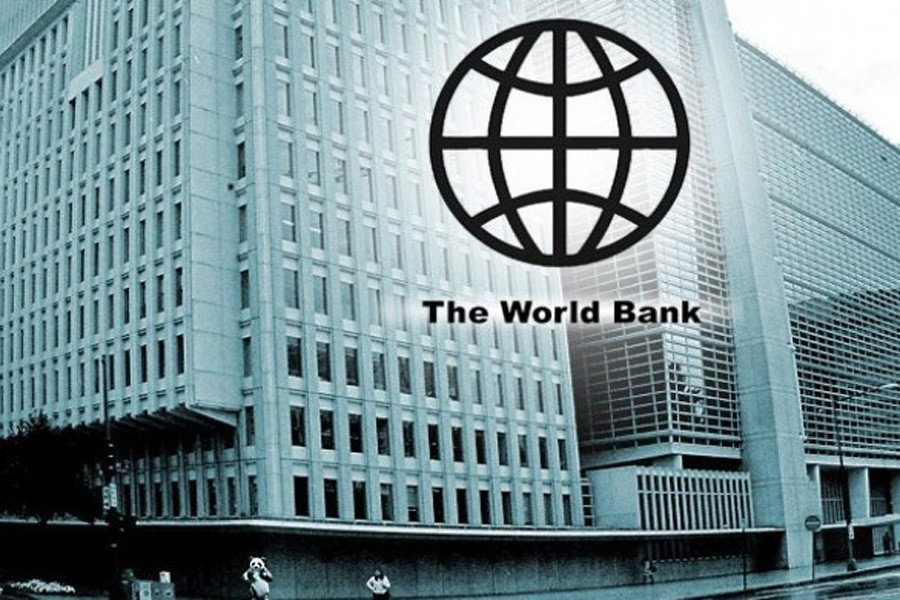At long last, the government has stepped in to plug holes in the social safety net programmes as far as possible with $245 million dollar funds from the World Bank (WB). Such a need was long overdue as in 2017 fiscal year alone, Bangladesh spent around $ 3.5 billion on social protection, which is about 1.4 per cent of its Gross Domestic Product. All these whopping funds are people's money. And there were leakages which slowed pace of progress in poverty alleviation. According to the WB, ongoing 'Safety Net Systems for the Poorest Project' will help an estimated nine million poorest households cross the barrier of poverty if the leakages are stopped.
A recent international study says safety net programmes have the potential to reduce the level of poverty in Bangladesh by 1.5 percentage points if benefits are allocated to the really poorest section of the population. In the absence of such effective social safety net transfers, poverty rates in Bangladesh would be 33 per cent, up from 31.5 per cent in 2010, it says. "However, if an amount equivalent to the average social safety net transfer was given to the poorest families, the poverty rate in the country would see a 27.2 per cent or a 4.3 percentage point reduction," the report estimates.
The new report "Bangladesh Poverty Assessment: Assessing a Decade of Progress in Reducing Poverty, 2000-2010 quoted the Household Income and Expenditure Survey and found that coverage of the poor by safety net programmes was 20.9 per cent in 2005, which rose to 34.4 per cent in 2010. The programmes suffer from leakages, particularly the food transfer programmes. The reason, it said, was the involvement of a large numbers of intermediaries in the system as well as the difficulties associated with procurement, distribution and storage of food.
The leakage went up to 59.8 per cent in 2010 from 44.3 per cent in 2005. Economists have time and again called upon the government to consolidate and restructure the system to make the programmes more efficient.
Iffath Sharif, senior economist of the World Bank, said Bangladesh spends over 2.0 per cent of its gross domestic product on safety net programmes, but it manages to reach only a third of the poor. "Bangladesh needs to focus on improving the linkage between safety nets and poverty reduction through improved design, targeting and timing of safety net responses. For example, the large number of cash allowances could be linked to human capital formation and targeted to the poor."
She said safety net coverage in the country doubled, with the increased coverage being in the poorest parts of the country. "Still, the potential of the safety nets to reduce household poverty remains largely untapped." The largest constraints faced by the safety net programmes are weak administrative and monitoring capacities, according to the report.
"Programmes' implementation can be facilitated and leakages can be reduced through investments in technology for delivery and information systems."
The report also said the country would benefit if the numerous safety net programmes, implemented by a number of agencies, are consolidated under a common strategy and agency.
The new project being funded by the World Bank will also support the Bangladesh Bureau of Statistics (BBS) to complete the country's first universal poverty registry-the National Household Database. This will be integrated with external information systems and allow various ministries and agencies to use its data for more equitable beneficiary selection. The disaster management department will build upon ongoing efforts to strengthen the implementation of its safety net programmes.
The WB officials said the additional financing will support establishment of an integrated social protection service delivery system, as envisioned in the National Social Security Strategy. This will comprise a single registry, financially inclusive payment systems, strengthened beneficiary selection processes, effective grievance mechanisms, and results-based monitoring and evaluation," he added
The Concern Worldwide Bangladesh has also pointed to another aspect so long ignored. A massive imbalance exists in the level of support given to the urban poor and the rural poor under the social safety net programmes initiated by the government.
The study showed that among the two major SSNPs - the Old Age Allowance and Widowed and Distressed Women Allowance - there is a vast discrepancy in the distribution of support between the urban poor and the rural poor. Of the Old Age Allowance, 94.03 per cent covers the rural poor while only 5.97 per cent goes to the urban poor. The Widowed and Distressed Women Allowance is even more lopsided, loaded 98.32 per cent in favour of the rural poor and only 1.68 per cent to the urban poor.
But the government has a different story to tell. It said the programmes are partly designed to reduce the migration of lower income groups to urban areas.
One of the major intentions of the SSNPs is to provide more support to rural areas and that is why the government has been running different programmes as an incentive to have them stay in villages.
However, the National Social Security Strategy has found shortcomings of the safety net programmes and aims to reform the provisions to ensure "more efficient and effective use of resources, strengthened delivery systems and progress towards a more inclusive form of Social Security".


